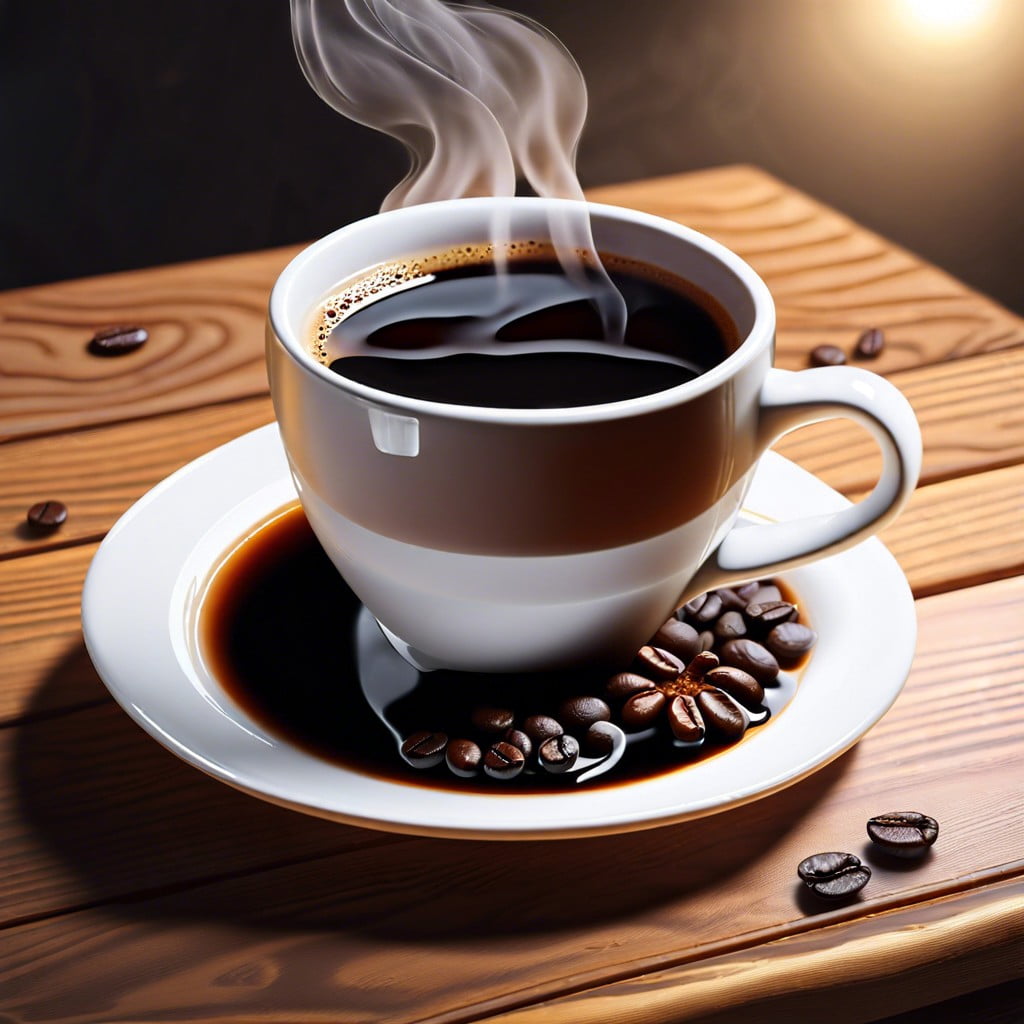Discover how much caffeine is in your cup of coffee and how it varies across different brews.
Milligrams of Caffeine in One Cup of Coffee

On average, a standard 8-ounce (240-milliliter) cup of coffee contains approximately 95 milligrams of caffeine. That said, the actual amount can vary widely, ranging from about 70 to 140 milligrams. Espresso, often thought to be a high-caffeine choice due to its bold flavor, actually contains about 63 milligrams in a single shot, which is only 1 ounce (30 milliliters). It’s the smaller serving size that keeps the caffeine count down.
Several beans contribute to these variations. Robusta beans pack almost double the caffeine punch of Arabica beans, which are more common in high-quality blends. The roast level also plays a role—light roasts have slightly higher caffeine than dark roasts, contrary to the popular belief that darker means stronger.
One crucial factor is the brewing method. French press? Drip? Cold brew? Each extracts caffeine differently. For instance, cold brew, steeped for a long time, often has more caffeine than its hot-brewed counterparts. Lastly, don’t forget serving size: a “cup” at many coffee shops is often larger than the 8-ounce standard, so the caffeine dose jumps up accordingly.
Remember, these are ballpark figures. Precise caffeine content can vary based on the coffee source, preparation method, and specific serving size. Keep an eye on how much you gulp down if you’re monitoring your caffeine intake.
Factors Affecting Caffeine Levels in Coffee
Different beans mean different amounts of buzz. Robusta beans pack more caffeine than Arabica, so your blend choice matters. Roast level also sways the scales; contrary to popular belief, lighter roasts have slightly more caffeine than darker ones due to less roasting time.
Grind size gets in on the action too. Finer grinds mean more surface area for extracting caffeine, making your espresso more eye-opening than a coarser drip brew.
Let’s not forget brew time. The longer the water cozies up to the coffee grounds, the more caffeine is kissed goodbye into your cup. More contact time, more pep in your step.
And who can ignore brew strength? Stronger coffee doesn’t just mean a bolder flavor but more caffeine per sip. Double-strength coffee doubles the charge.
Lastly, size does matter. Larger servings bring more caffeine to the table—no surprise here. Remember, a “cup” of coffee in the caffeine content conversation typically refers to 8 ounces, not your oversized mug. Keep these variables in mind, and you’re well on your way to fine-tuning your caffeine intake.
Caffeine Content in Popular Coffee Chains
When you stroll into your favorite chain coffee shop, the jolt you get from their brew may vary from what you’re used to at home. Major brands like Starbucks typically pack a punch; a standard 16-ounce (grande) Pike Place Roast serves about 310 mg of caffeine. Meanwhile, a same-sized coffee at Dunkin’ delivers a more moderate 210 mg.
If your cravings lead you to McDonald’s, expect about 145 mg of caffeine for a medium roast. But if you’re committed to local cafes or non-chain establishments, keep in mind that their caffeine content can be a wildcard, with values dependent on the bean origin, roast level, and brewing technique.
Remember, consistency is king with these major players, so while the local place might offer an exciting surprise in every sip, these familiar chains keep your caffeine levels predictably managed—something that can be crucial for your daily routine.
The Health Threshold: How Much Caffeine Is Too Much?
Navigating the jittery seas of caffeine consumption needn’t make your palms sweat. Think of your daily intake as a fuel gauge rather than a sprint. The general consensus from health experts pegs 400 milligrams — about four 8-ounce cups of brewed coffee — as the safe boundary for most adults.
Brewing beyond this limit may kickstart a less than pleasant tour through headache ville, restlessness city, and insomnia island. Remember, individual tolerance can vary; some might feel the buzz on a lesser dose while others can guzzle a bit more before feeling the effects.
For expectant mothers and individuals with certain medical conditions, the line in the sand shifts. It’s about two 8-ounce cups or 200 milligrams for pregnant women due to caffeine’s slow dance through their system and its jitterbug with the fetus.
Be mindful of other hideouts of caffeine — chocolate, tea, and sodas. They contribute to your daily tally, often slipping under the radar. Keeping tabs on the tick of your caffeine clock ensures your health doesn’t dip below the horizon.
Strategies for Reducing Caffeine Intake
Decaf’s your friend when the love for coffee runs deep but the caffeine buzz needs a halt. Much like a covert decaffeinated operative, it keeps the flavor while ditching most of the stimulant. For those who favor the gradual approach, mixing regular beans with their decaf counterparts can dial down the intensity, giving control over the caffeine content sip by sip.
Consider a smaller cup; it’s common sense in a petite package. Less liquid, less caffeine, but all the ritual of your coffee break intact. It’s like a miniaturized full experience, the essence of coffee without the jitters.
Mind the clock; timing is more than just a tick-tock game. Savoring a cup early in the day provides ample time to metabolize caffeine before bedtime.
Branch out to herbal teas or chicory coffee; these brews deceive the senses with coffee-like richness or tea’s warm embrace but leave the caffeine behind. It’s like wearing a disguise at the caffeine masquerade ball.
Finally, listen to your body. It has more to say than a chatty barista on a slow day. If palpitations or restlessness knock, it might be time to switch up your order. Your body’s whispers can guide your caffeine journey towards gentler shores.